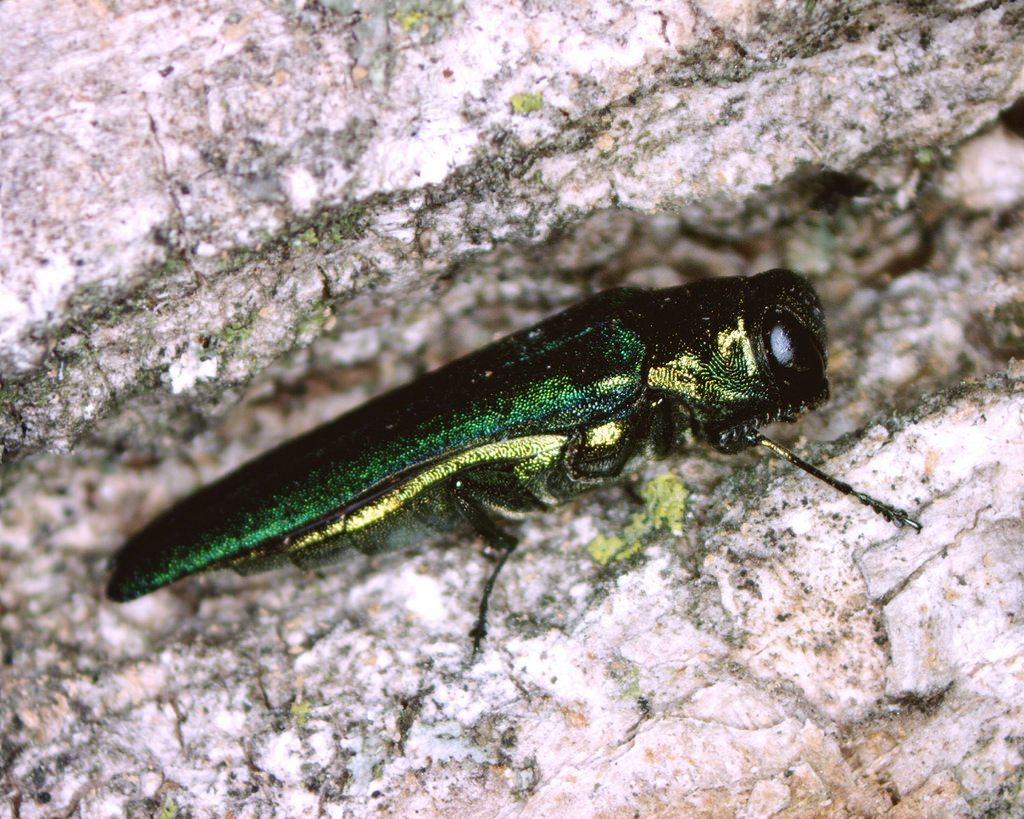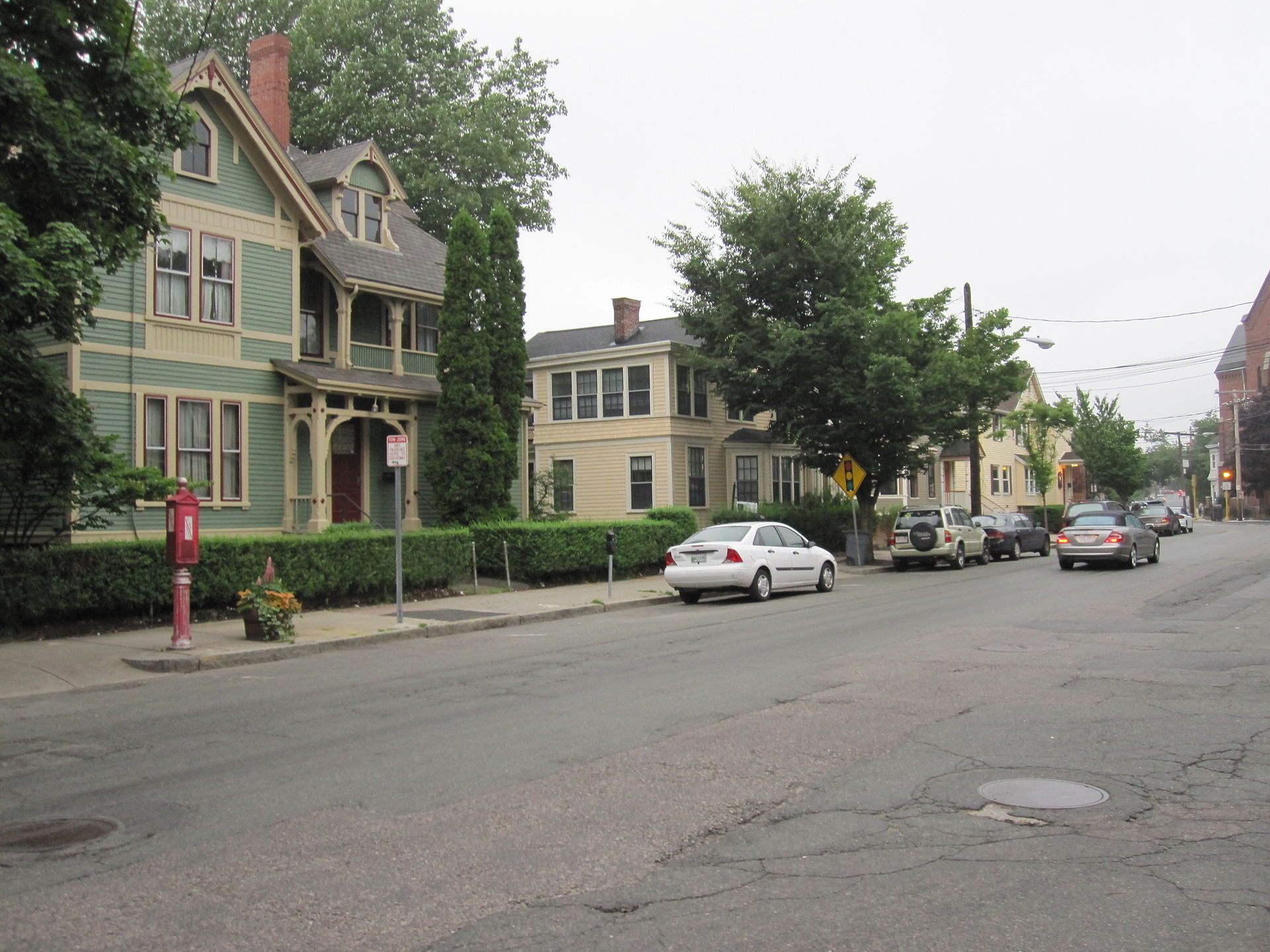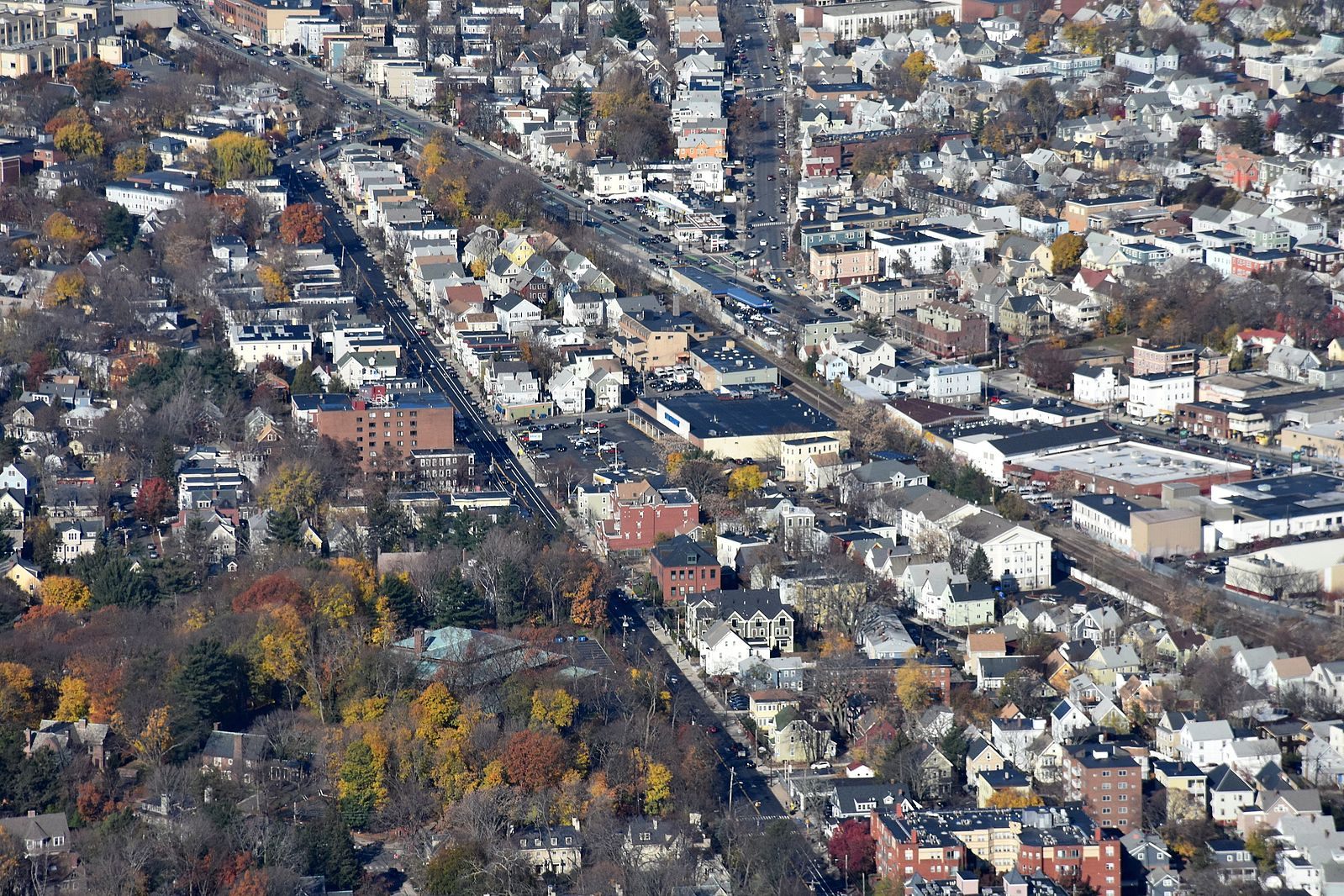In The Mood For Drama? Go To An Urban Tree Hearing
The people of Somerville, Massachusetts really, really care about trees.

A tree on trial in Somerville, Massachusetts. (Photo: Atlas Obscura)
Sometime last month, the street trees of Somerville, Massachusetts were overtaken by a strange crop. Seemingly overnight, vertical inhabitants of all sorts—sprawling neighborhood giants, slim sidewalk-shaders, even the occasional telephone pole—sprouted identical flyers. In inch-high all-caps, in standard bureaucratic font, the signs carried an ominous message: “NOTICE OF A PUBLIC HEARING,” they read, “IN RELATION TO THE REMOVAL OF THIS TREE.”
In another city, such an appearance might amount to a death sentence for the trees. It’s easy to imagine busy urbanites walking or biking right past these signs, en route to work or the grocery store, thinking “that’s too bad”—and then, months later when the chainsaws come, thinking it again.
But this is Somerville, winner of a Tree City USA award at least 17 years running. Such honors do not come without a populace committed to tree preservation. So at 5:30pm on a balmy Thursday, a good 50 people have stuffed themselves inside the city’s Water Department Building to exercise their arboreal rights. Some have come straight from work, and roll up their shirtsleeves as they step into the stuffy room. Others tote in children, who crane their necks towards the Little League game across the street. The rows of folding chairs filled early, and stragglers are packed into the narrow aisles—meaning the tree hearing is, fittingly, standing room only.

Boston’s Liberty Tree, RIP. (Image: Harvard University/Public Domain)
In urban Massachusetts, civic-mindedness has pretty much always included a soft spot for trees. In 1636, colonial Bostonians passed an ordinance insisting that planted trees be “prevented… from being spoiled.” In 1775, to mess with revolutionary morale, the British cut down one of the Common’s largest elms, the so-called Liberty Tree. Increased industrialization led to a brief period of frenzied chopping, but this was short-lived, and since 1899, Massachusetts statute has mandated that every public tree facing removal must first receive a hearing. Even now, other states that have adopted similar legislation tend to refer to it as “the Massachusetts law.”
This particular meeting’s main event concerns about 100 ash trees marked for demolition, explains Brad Ross, a designer and data scientist with the Mayor’s Office. Somerville officials fear these specific trees will make easy prey for the Emerald Ash Borer, a small beetle that has been devouring its preferred species since it first hitched a ride here from Asia in 2002.
Though the borer has not yet been found in Somerville proper, having vulnerable trees around is likely to speed up its inevitable invasion. “The city strategy is to deny the bug the easy prey, the safe havens,” says Ross. Thus, a certain number of already-weak trees must be sacrificed for the greater good. City officials hope to use this meeting to make their reasoning clear to the populace, and to address any concerns. Judging by the hardwooded looks on said populace’s faces, they’ve come with quite a few.

The Emerald Ash Borer, enemy of the state. (Photo: US Department of Agriculture/CC BY-ND 2.0)
But that’s later. Like a gladiatorial contest, this hearing starts with a few warmup matches, between individual trees and the particular humans who want them gone. First up is a man from the northwest corner of the city who is tired of cleaning up after his neighbor, a Japanese zelkova tree. The zelkova is a litterbug, dumping twigs and leaves all over his front steps. Someone is going to fall and crack their head open. “It’s just a constant mess,” he sums up, before sitting down again.
Surprisingly quickly, the crowd begins to bay for blood. Why wouldn’t one want to tidy up after a tree? Will the tree be replaced? How quickly? Haven’t we heard that before? There is a reason, they seem to suggest, that the zelkova is throwing bits of itself at this man—who, by now, appears flummoxed and somewhat dazed. “If you want, you can come down and clean it too and I won’t have to worry about it anymore!” he replies, eventually. The issue is tabled, for now. The verdict will be delivered to the man in a couple of weeks—after which he will either pay for the tree’s removal, or keep sweeping.
From then on, the tree-indicters play to their audience—or at least try. Molly Donovan, whose home has long been menaced by a large linden, begins with a soft sell. “I love the tree in front of our house,” she says. “My mother-in-law remembers when it was planted. She’s 93 years old. The tree was often third base when her kids played kickball.” If said mother-in-law trips over the tree’s massive root, which is now pushing up the sidewalk, she will likely die. “Please don’t save this tree,” Donovan pleads. You get the feeling she has practiced this repeatedly, in front of a mirror.

Bow St. in Somerville, home to some fine street tree specimens. (Photo: Mangostar/CC BY-SA 3.0)
The crowd, though understanding, would still really like to save this tree. Is there any other way? Could they put a raised bump around the tree, to warn about the roots? When someone suggests the city buy some of Donovan’s property in order to widen the sidewalk, she finally snaps, barking “I’m not selling my land,” and this particular hearing ends. On to the next one, in which two women in baseball caps detail exactly how badly the tree near their house has cracked their driveway, brick wall, and foundation, and how it is letting in a constant stream of squirrels.
“Let’s not give squirrels a bad name,” responds one woman, standing up from her chair. A young couple interrupts to break out their trump card—they’ve brought along a petition, signed by 100 people who want that particular tree to stay. “People from, what, out in Acton?” asks the shocked prosecution, now on the defense. “Anyone in the state can voice their opinion about any sidewalk tree,” explains Steven MacEachern, the town’s Superintendent of Highways, Lights and Lines—also potential tree antagonists. ”It doesn’t matter if they live on the street or even in the city.”
By the time the main event—the discussion of the endangered ash trees—arrives, things are approaching chaos. Ross clicks through his ash borer Powerpoint presentation with the good-natured steely-eyedness of someone ready to lay down some hard truths. “Who remembers that giant willow over by the school?” he begins. “Awesome tree. Had to come down.” He explains the city’s two surveys, their plan of action, the decimation of other cities’ ash populations. “This is the new normal,” he insists.

Somerville and Cambridge, viewed from from the air. A certain amount of tree discrepancy is visible. (Photo: Nick Allen/CC BY-SA 4.0)
No slide goes by without an accusation, or a blast of color commentary. Citizens reference scientific papers, age-old reports, and individual grievances with equal facility. Along the way, a few things are cleared up. In their enthusiastic effort to inform the public, the city put signs all over the place, including on trees that won’t actually be coming down—only the trees marked with orange spray paint will. (This also explains the telephone poles.) After a brief, self-aware murmur, the crowd quickly recovers. “The orange markings you’ve already put on the trees don’t make us feel like our voices matter,” says one woman.
There is likely no saving this batch of trees. If the city doesn’t get to them first, the ash borer will, digging curlicues into their cambium until they wither and die. The bugs won’t be talked out of it.
For now, though, the people of Somerville continue defending their ideal city—one with a chicken in every pot, a tree in every sidewalk, and a moment of undivided attention for every concerned citizen. Called on by Ross, one man begins his question by waxing poetic about the red oak he just planted in front of his house. “It’s going to be huge,” he continues, dreamily. “A hundred years from now, people will be screaming that it’s cracking their driveway.”
Naturecultures is a weekly column that explores the changing relationships between humanity and wilder things. Have something you want covered (or uncovered)? Send tips to cara@atlasobscura.com.














Follow us on Twitter to get the latest on the world's hidden wonders.
Like us on Facebook to get the latest on the world's hidden wonders.
Follow us on Twitter Like us on Facebook